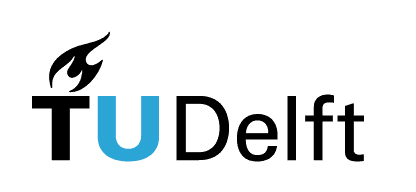Problem set 6
Contents
Problem set 6¶
Problem 6.1¶
Salt ions disrupt the structure of the water molecules, and stimulate the nucleation process. For the formation of a new phase (here, a gas bubble) an energy barrier needs to be overcome. Small particles or a dirty pan can lower the barrier of the nucleation process locally. (this is actually a difficult question, and this answer is not the full story)
To prevent the formation of many different crystalline domains, which gives an undesirable texture and look, and to make sure that one ends up with the ’desirable’ crystalline phase (which forms around 32\(^\mathrm{o}\)C) which is the shiniest and makes the best sound when it is broken.
Important is to use a clean bottle, to cool rapidly, and to cool deep enough, and not too long, to make sure that the nucleation process does not take over.
The formation and growth of ice crystals cuts organic material into pieces at a microscopic scale. And if that is not harmful enough, it also changes the osmotic pressure in the remaining fluid phase, such that cells can dry out or burst.
If one minimises \(G\) one finds that
\[\frac{\partial G}{\partial R} = 0\]implies
\[R_\mathrm{crit} = \frac{\Delta G}{2 \gamma}\]How the surface tension \(\gamma\) and change in free energy \(\Delta G\) are calculated is a story for another time.
Problem 6.2¶
For an ideal gas
\[p = k_\mathrm{B}T \rho\]and a Van der Waals fluid
\[p = k_\mathrm{B}T \frac{\rho}{1-b\rho} - a \rho^2\]See plot at the bottom of this page.
See lecture (slides)
Anywhere where there are multiple densities with the same pressure, one could expect a phase coexistence (draw a horizontal line in the \(p\) vs. \(\rho\) curve). However, the regime where the pressure decreases with density should not be counted, because these densities unstable (see lecture)
For an ideal gas
\[\mu = k_\mathrm{B}T\ln{\rho}\]and for a Van der Waals fluid
\[\mu = k_\mathrm{B}T\ln\frac{\rho}{1-b\rho} + \frac{k_\mathrm{B}T}{1-b\rho} - 2a\rho\]See plot at the bottom of this page.
Yes, if there are multiple densities with the same \(\mu\) one can expect a phase coexistence. The regime where \(\mu\) decreases with density should not be counted (see part d and lecture slides)
This follows quickly after substituting \(\frac{N}{V}\) by \(\rho\).
For the pressure (use the sum rule and the chain rule):
\[p = - \frac{\partial}{\partial V} Vf = - f - V \frac{\partial f}{\partial V} = -f - V \frac{\partial \rho}{\partial V}\frac{\partial f}{\partial \rho} = \rho \frac{\partial f}{\partial \rho} - f\]and for \(\mu\) similarly:
\[\mu = \frac{\partial}{\partial N} Vf = V \frac{\partial f}{\partial N} = V \frac{\partial \rho}{\partial N}\frac{\partial f}{\partial \rho} = \frac{\partial f}{\partial \rho}\]It may be obvious that the chemical potentials are the same, because \(\mu = \frac{\partial f}{\partial \rho}\) is the slope of the curve, and the two points obviously have the same slope:
\[\mu_1 = f'(\rho_1) = f'(\rho_2) = \mu_2\]For \(p_1 = p_2\) another condition has to be met. If that is the case, then
\[p_1 = \rho_1 f'(\rho_1) - f(\rho_1) = \rho_2 f'(\rho_2) - f(\rho_2) = p_2\]Swapping some terms, gives
\[\rho_1 f'(\rho_1) - \rho_2 f'(\rho_2) = f(\rho_1) - f(\rho_2)\]but we know that \(f'(\rho_1)=f'(\rho_2)\), so
\[f'(\rho_1) = f'(\rho_2) = \frac{f(\rho_1) - f(\rho_2)}{\rho_1 - \rho_2}\]This statement tells us that for the pressures to be the same, the points need to have the same slope, and in addition to that, that if the two points are connected with a straight line, that this line has to have the same slope as well. This can be done very easily by putting a ruler against the curve of \(f(\rho)\), as shown in Fig. 6.3.
---------------------------------------------------------------------------
ModuleNotFoundError Traceback (most recent call last)
<ipython-input-1-27d399243571> in <module>
----> 1 import numpy as np
2 import plotly.graph_objects as go
3 from plotly.subplots import make_subplots
4 from scipy.optimize import fsolve
5
ModuleNotFoundError: No module named 'numpy'
